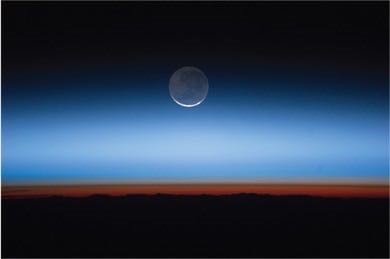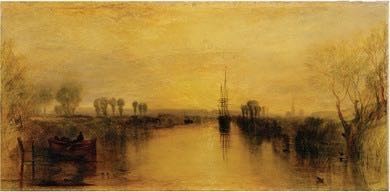3.2 Volcanic sulfates
The largest volcanic event of modern times, the eruption of Mount Tambora in Indonesia, took place in April 1815. This ‘Year Without a Summer’ suffered gloomy skies, cold weather and failed crops. Where records exist, they reveal abnormally cold weather during the following year, with unseasonal frosts and snowfalls in the north-eastern USA, and crop failures and famine in England, France and Germany.
It has been suggested that Tambora and a later volcanic eruption – which made sunsets a hazy, pinky–orange – influenced Turner’s distinctive artistic style (Figure 10; Zerefos et al., 2007).
Ash and lava are the most visually dramatic results of volcanic eruptions, but volcanoes also emit SO2 gas. The gas forms sulfate aerosols with the same cooling effects as described for industrial sulfates. If the eruption is large, these aerosols can be ejected into the stratosphere.
The stratosphere is a layer in the upper regions of the atmosphere (from around 18 km altitude in the tropics), above the more turbulent troposphere layer where rainfall and most conventional ‘weather’ occurs (Figure 11). Aerosols in the stratosphere are too high to be rained out, which means they survive long enough to be dispersed around the world and can affect climate through the direct cooling effect for around one to three years.

This cooling effect can be enormous. After the devastating eruption of Mount Pinatubo in the Philippines in June 1991, global mean surface temperatures decreased by about 0.3 to 0.4 °C (Santer et al., 2016).

